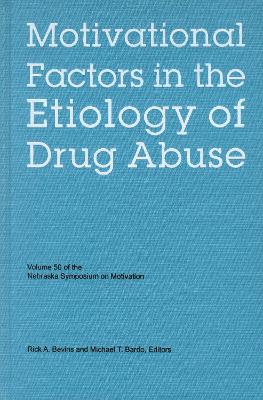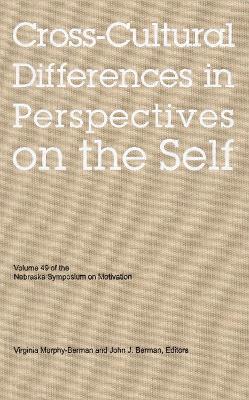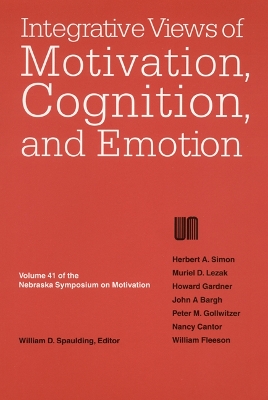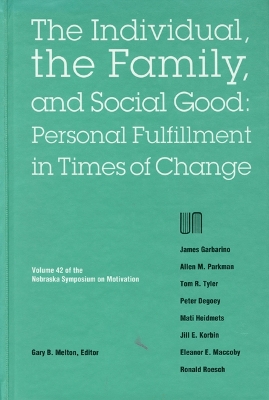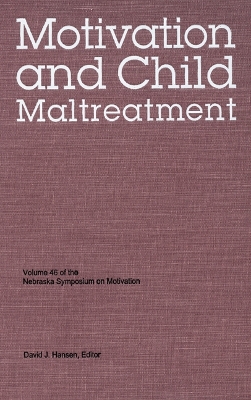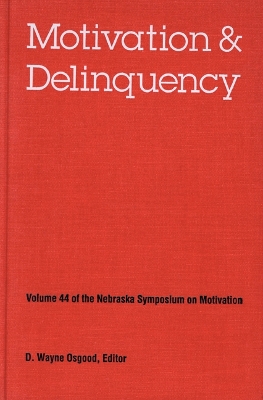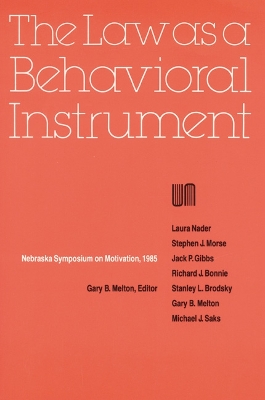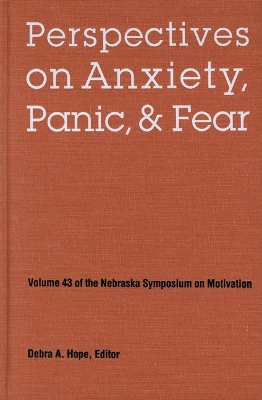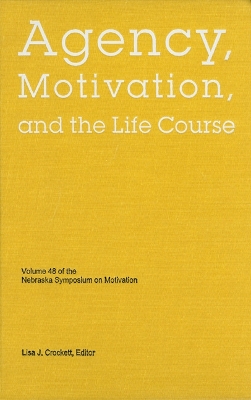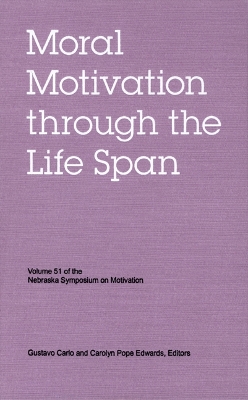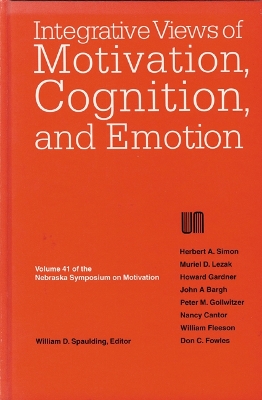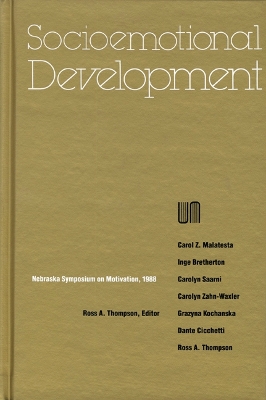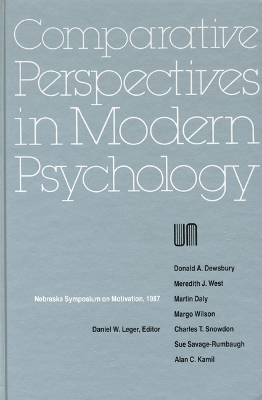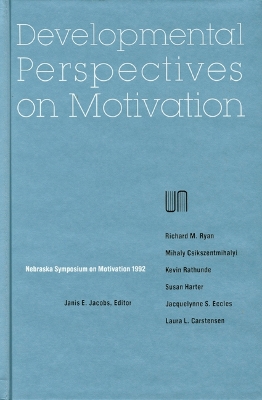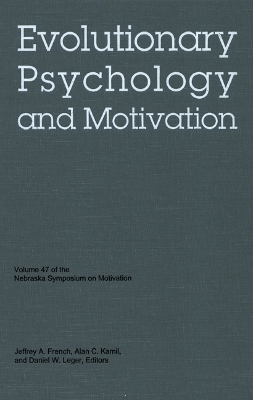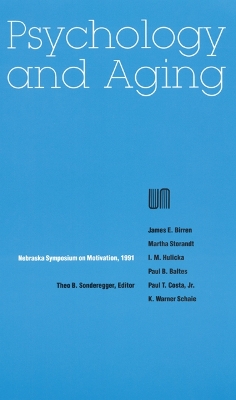Nebraska Symposium on Motivation
20 total works
The motivational processes involved in drug abuse, the largest health problem in the United States, are the subject of eight thought-provoking essays that probe behavioral, cognitive, evolutionary, and physiological perspectives. George F. Koob discusses the implications of an allostatic view of motivation in psychopathology. Harriet de Witt considers the dual determinants of drug use in humans, reward and impulsivity, while R. D. Spealman and his research team assess the triggers of relapse in nonhuman primates. Jaak Panksepp and associates elucidate the role of emotional systems in addiction via a neuroethological perspective, while Michael T. Bardo and Linda Dwoskin describe the biological connection between novelty and drug-seeking motivational systems. Drive, incentive, and reinforcement, along with factors controlling the reinitiation of drug seeking and the environmental sources of motivation round out the remaining discussions by Roy A. Wise, Jane Stewart, and M. Vogel-Sprott.
This cognitive revolution has fostered a view of the passing of information back and forth between perceptual, memory, and motor components of an integrated system, known as the “computational metaphor.” With cognition as the new paradigm, can we expect that the explanatory scope of psychology will be clarified? Will a cognitive perspective be extended to phenomena that have traditionally fallen under the rubric of motivation and emotion?
The psychologists involved in this volume of the Nebraska Symposium address these questions specifically. Their contributions stimulate a hypothesis that the cognitive paradigm has begun to move psychology toward a “unified field theory” of behavior and experience.
Herbert A. Simon tests the limits of a pure information processing paradigm. A basic tenet of this theoretical approach is that information exists independent of the medium by which it is represented. By analyzing the information processing capabilities of nonbiological systems, or “artificial intelligence,” we may determine which aspects of motivation and emotion require the biological substrate of cognition.
Muriel D. Lezak raises a similar question by focusing on the biological substrate itself and by analyzing the constraints and determinations that it imposes. Howard Gardner considers the medium and the information it processes; thus he lays a conceptual foundation for making the facts of biological brain science congruent with the richness of human behavior and experience.
The contributors to Alcohol and Addictive Behavior, all of them established professionals, focus on such key issues as the effect of addiction on the family, the influence of genetics, and the source of alcohol and drug craving. Much of what they report is based on new and ongoing research that should have considerable influence in the future treatment of alcohol and substance abusers.
The contents include: “What Do Behavioral Scientists Know—and What Can They Do—about Alcoholism” by Peter E. Nathan, Rutgers University; “The Four Alcoholisms: A Developmental Account of the Etiological Process” by Robert A. Zucker, Michigan State University; “Antecedents and Consequences of Drinking and Drinking Patterns in Women: Patterns from a U.S. National Survey” by Richard W. Wilsnack, University of North Dakota School of Medicine; “Alcoholism: A Family Interaction Perspective” by Theodore Jacob, University of Pittsburgh, Biological Markers for Alcoholism: A Vulnerability Model Conceptualization” by Shirley Y. Hill, University of Pittsburgh School of Medicine; and “The Motivation to Use Drugs: A Psychobiological Analysis of Urges” by Timothy B. Baker, University of Wisconsin-Madison.
The papers on sex differences with Ann Anastasi's "Reciprocal Relations between Cognitive and Affective Development—with Implications for Sex Differences," in which the author relates aptitudes about the sex appropriateness of behaviors to attitudes and task performance. The effects of prenatal sex hormones on gender identity and gender-role behavior are the subject of the next paper, "Gender Differences: A Biosocial Perspective" by Anke A. Ehrhardt. In "Gender Identity and Its Implications for the Concepts of Masculinity and Femininity," Janet T. Spence proposes a new theoretical approach to the meanings of "femininity" and "masculinity." "Sex Differences in Achievement Patterns" are Jacquelynne Eccles's concern in her paper.
Gender is now studied as a variable in all areas of psychology, several of which are represented in the next four papers. The concept is viewed in the light of attribution theory by Virginia E. O'Leary and Ranald D. Hansen in "Sex as an Attributional Fact." Sandra Lipsitz Bem, in "Androgeny and Gender Schema Theory: A Conceptual and Empirical Integration," reviews her studies of gender-schematic processing and offers strategies for parents who wish to raise gender-schematic children in a gender-schematic society. Joan C. Martin's "Perinatal Psychoactive Drug Use: Effects on Gender, Development, and Function in Offspring" focuses on the sex-ratio effects of nicotine, alcohol, and barbiturates on the offspring of rats to whom those drugs were administered during their pregnancy. Differential effects on women and men of cultural attitudes about obesity are the subject of "Women and Weight: A Normative Discontent" by Judith Rodin, Lisa Silberstein, and Ruth Striegel-Moore.
An introduction by Theo B. Sonderegger, professor of psychology at the University of Nebraska-Lincoln, places the papers in the context of research on sex differences and gender as a variable.
Carroll E. Izard and Eric A. Youngstrom open with a review of Differential Emotions Theory. In the second chapter, Jeffrey A. Gray and Neil McNaughton summarize and update Gray's neuropsychological theory of anxiety. Susan Mineka and Richard Zinbarg consider what modern conditioning theory contributes to the understanding of emotion, and Richard J. McNally offers an overview of the application of experimental cognitive paradigms to fear, panic, and anxiety.
The volume concludes with a new version of David H. Barlow's theory of emotional disorders. Barlow, Bruce F. Chorpita, and Julia Turovsky draw from work on emotion, neurophysiology, attributions, learning, ethology, attention, and child development to describe how the inappropriate activation of fear (e.g., a panic attack) can trigger events that may eventually become a clinical anxiety disorder.
Perspectives on Anxiety, Panic, and Fear confirms that anxiety, panic, and fear are complex phenomena requiring a multidimensional approach that ranges from neuroanatomy to conditioning.
This volume examines how agency in the life course can be conceptualized and investigates the specific ways in which personal characteristics and contextual variables play a role in shaping individual lives. The contributors offer differing perspectives on agency, how its expression changes over a lifetime, and how it is constrained, channeled, or altered by cultural and social institutions.
Each chapter focuses on one aspect of individual agency that can have a cumulative influence on an individual's life. Following an overview of the subject by Lisa J. Crockett, Jochen Brandtstädter and Klaus Rothermund provide a life-span model of agency focused on "intentional self-development" and goal accommodation. Ellen Skinner and Kathleen Edge discuss the development of coping, a potential underpinning of agency. In a concluding essay, Michael J. Shanahan and Glen H. Elder Jr. examine agency within a life-course framework, showing that the impact of individual agency on people's lives depends on the opportunities and constraints present during a particular historical era.
This cognitive revolution has fostered a view of the passing of information back and forth between perceptual, memory, and motor components of an integrated system, known as the “computational metaphor.” With cognition as the new paradigm, can we expect that the explanatory scope of psychology will be clarified? Will a cognitive perspective be extended to phenomena that have traditionally fallen under the rubric of motivation and emotion?
The psychologists involved in this volume of the Nebraska Symposium address these questions specifically. Their contributions stimulate a hypothesis that the cognitive paradigm has begun to move psychology toward a “unified field theory” of behavior and experience.
Herbert A. Simon tests the limits of a pure information processing paradigm. A basic tenet of this theoretical approach is that information exists independent of the medium by which it is represented. By analyzing the information processing capabilities of nonbiological systems, or “artificial intelligence,” we may determine which aspects of motivation and emotion require the biological substrate of cognition.
Muriel D. Lezak raises a similar question by focusing on the biological substrate itself and by analyzing the constraints and determinations that it imposes. Howard Gardner considers the medium and the information it processes; thus he lays a conceptual foundation for making the facts of biological brain science congruent with the richness of human behavior and experience.
In Socioemotional Development leading scholars approach the topic from diverse perspectives, summarizing findings and discussing original research. They also address a number of broad developmental concerns: What are the lasting effects of early influence? What can account for the long-term consistency of individual characteristics? What are the origins of psychological disorders? To what extent is emotional experience socially constructed? How does biology affect emotion?
The contributors and their works are Carol Z. Malatesta, “The Role of Emotions in the Development and Organization of Personality”; Inge Bretherton, “Open Communication and Internal Working Models: Their Role in the Development of Attachment Relationships”; Carolyn Saarni, “Emotional Competence: How Emotions and Relationships Become Integrated”: Carolyn Zahn-Waxler and Grazyna Kochanska, “The Origins of Guilt”; Dante Cicchetti, “The Organization and Coherence of Socioemotional, Cognitive, and Representational Development: Illustrations through a Developmental Psychopathology Perspective on Down’s Syndrome and Child Maltreatment.”
Contents include: “The Comparative Psychology of Monogamy” by Donald A. Dewsbury; “Coming to Terms with the Everyday Language of Comparative Psychology” by Meredith J. West and Andrew P. King; “The Darwinian Psychology of Discriminative Parental Solicitude” by Martin Daly and Margo Wilson; “A Comparative Approach to Vocal Communication” by Charles T. Snowdon; “A New Look at Ape Language: Comprehension of Vocal Speech and Syntax” by Sue Savage-Rumbaugh; “A Synthetic Approach to the Study of Animal Intelligence” by Alan C. Kamil.
Challenging the view that cognitive aging is identical with decline, Paul B. Baltes, Jacqui Smith, and Ursula Staudinger adopt the hypothesis of simultaneous growth and decline and relate it to wisdom. Trait psychology is discussed by Paul T. Costa, Jr., and Robert R. McCrae, who review the most recent advances and present new data from longitudinal studies. K. Warner Schaie and his colleagues describe problems and methods of studying natural cohorts within a longitudinal study and report the first data on adult parent-offspring similarity determined as a function of the age of the pair when studied. A commentary chapter by Ross A. Thompson concludes the volume.
